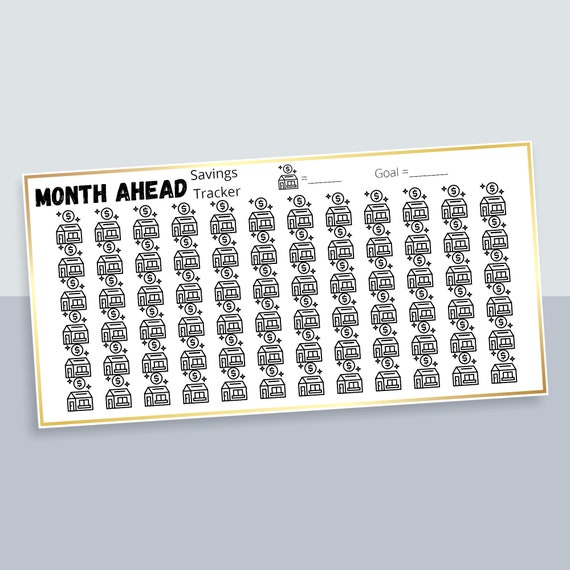Monitoring savings progress is a crucial step in achieving financial stability and security. By tracking monthly savings, individuals can assess their financial health, identify areas for improvement, and make informed decisions about their money. Regularly reviewing savings progress helps to stay motivated and focused on long-term financial goals. Effective savings tracking enables individuals to adjust their spending habits, allocate resources efficiently, and maximize their savings potential. This habit is essential for building wealth and securing a stable financial future, allowing individuals to make the most of their hard-earned money.
Monitoring Your Savings Growth Monthly
To effectively manage your finances, it’s crucial to have a clear picture of your savings over time. Tracking your savings progress every month allows you to understand your financial health better, make informed decisions, and adjust your strategies as needed. By doing so, you can stay on track with your financial goals, whether it’s saving for a big purchase, paying off debt, or building a safety net.
Setting Up a Savings Tracking System
Creating a system to track your savings involves selecting the right tools and methods that fit your financial habits and goals. You can use a spreadsheet, a budgeting app, or even a simple notebook to record your savings each month. The key is to be consistent and accurate in your tracking. By doing so, you’ll be able to identify patterns and trends in your savings behavior, which can inform your future financial decisions. Consistency and accuracy are crucial for effective savings tracking.
| Month | Savings Amount | Cumulative Savings |
|---|---|---|
| January | $500 | $500 |
| February | $550 | $1050 |
| March | $600 | $1650 |
Analyzing Your Savings Progress
Regular analysis of your savings progress is vital to understanding whether you’re on track to meet your financial goals. By reviewing your savings data, you can identify areas for improvement, such as months where your savings dip or periods where you’re consistently saving more. This analysis can also help you adjust your budget and savings strategies to better align with your goals. Regular review and adjustment are essential for maximizing your savings potential.
| Savings Goal | Target Amount | Current Progress |
|---|---|---|
| Emergency Fund | $10,000 | $1650 |
| Vacation Fund | $5,000 | $0 |
| Down Payment Fund | $20,000 | $0 |
Adjusting Your Savings Strategy
As you track and analyze your savings progress, you may find that you need to adjust your savings strategy to stay on track or to respond to changes in your financial situation. This could involve increasing your monthly savings amount, exploring higher-yield savings accounts, or reducing expenses to free up more money for savings. Being proactive and flexible with your savings plan can help you overcome obstacles and stay committed to your financial goals. Flexibility and proactivity are key to a successful savings strategy.
 Build wealth fast through smart savings
Build wealth fast through smart savings| Adjustment | Impact on Savings | Implementation Date |
|---|---|---|
| Increase Monthly Savings | +10% | April 1st |
| Open High-Yield Savings Account | +2% Interest | March 15th |
| Reduce Monthly Expenses | +5% Disposable Income | February 1st |
Monitoring Your Savings Growth
By tracking your savings progress every month, you can identify areas where you can improve and make adjustments to stay on track with your financial goals, allowing you to make informed decisions about your budgeting and spending habits.
Setting Realistic Targets
To effectively track your savings progress, it’s essential to set realistic targets that align with your financial objectives, taking into account your income and expenses to determine a feasible savings amount.
Utilizing Budgeting Tools
Leveraging budgeting tools and savings apps can simplify the process of monitoring your savings progress, providing a clear picture of your financial situation and enabling you to make data-driven decisions.
Analyzing Spending Patterns
Regularly reviewing your spending patterns is crucial to understanding where your money is going and identifying opportunities to optimize your savings rate, allowing you to make adjustments to your budget accordingly.
Adjusting Your Strategy
As you track your savings progress, you may need to adjust your savings strategy to stay on track, which could involve increasing your income, reducing expenses, or exploring alternative investment options.
 Create emergency funds for financial security
Create emergency funds for financial securityMaintaining Accountability
Tracking your savings progress regularly helps maintain accountability and motivates you to continue working towards your financial goals, ensuring that you remain committed to your long-term financial plan.
Frequently Asked Questions
How do I track my savings progress every month?
To track your savings progress, set a specific savings goal and record your progress monthly. You can use a spreadsheet, a budgeting app, or a savings tracker to monitor your progress. Regularly reviewing your savings will help you stay motivated and adjust your strategy as needed. Be sure to update your tracker consistently to get an accurate picture of your progress.
What are the benefits of tracking my savings progress?
Tracking your savings progress helps you stay focused on your financial goals and motivated to save. It also allows you to identify areas where you can improve your savings strategy. By monitoring your progress, you can make adjustments to your budget and savings plan, ensuring you’re on track to meet your goals. Regular tracking also helps you develop healthy savings habits.
How often should I review my savings progress?
Review your savings progress at least once a month to stay on track with your goals. Regular monthly reviews help you identify any changes needed in your savings strategy. You can also review your progress more frequently, such as every two weeks, if you prefer. The key is to find a review schedule that works for you and stick to it.
What tools can I use to track my savings progress?
You can use various tools to track your savings progress, including budgeting apps, spreadsheets, and savings trackers. Popular budgeting apps like Mint and Personal Capital allow you to track your savings and set financial goals. Spreadsheets like Google Sheets or Microsoft Excel provide a customizable way to track your progress. You can also use a simple savings tracker or a notebook to monitor your progress.
 Save more money with these tips
Save more money with these tips
